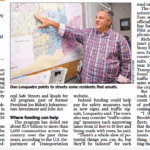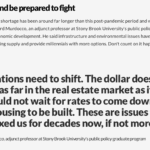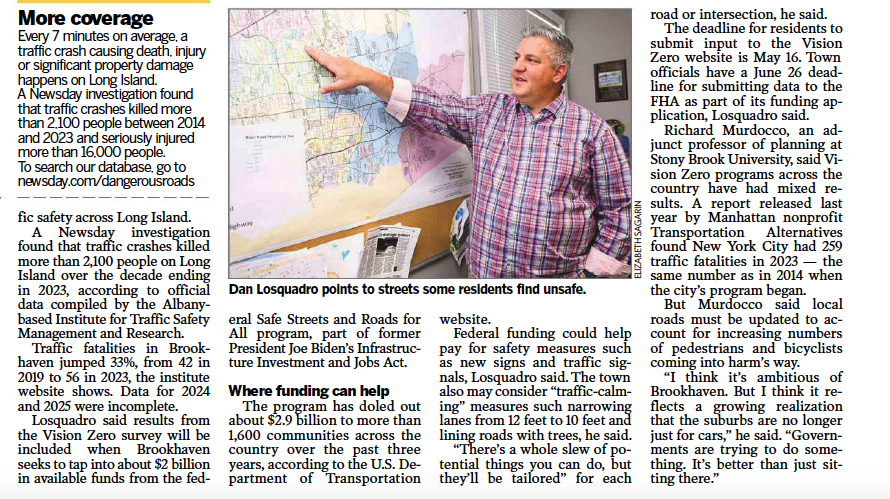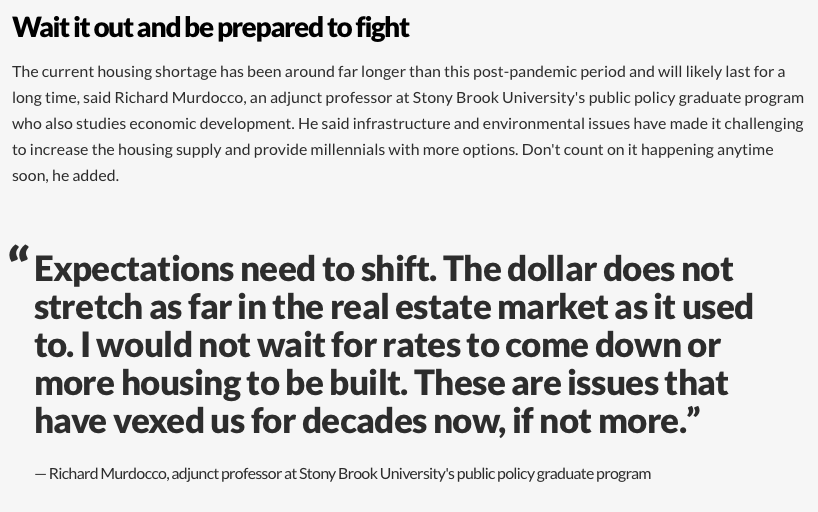The following was written for the Long Island Press, and published on March 9, 2016. You can read the original here.
On Long Island these days, downtowns are happening places—at least in policy circles. From the governor’s office to the local village, it’s the buzz word that everybody’s talking about.
In Gov. Andrew Cuomo’s current budget proposal, 10 regions across New York State can each get up to $10 million to help spur downtown redevelopment efforts. But interested municipalities first will have to apply for the grants before they can start putting the money to work. Shepherding the application process here is the ever-active Long Island Regional Economic Development Council (LIREDC), charged with jumpstarting our region’s anemic growth. Details remain to be ironed out as the state’s budget takes final shape.
The Suffolk County Industrial Development Agency, a public benefit corporation of New York State, has supposedly been hot to trot on spurring downtown redevelopment. For some reason the IDA recently hired what Newsday simply reported was “a planning group” to assist Amityville, Kings Park and Smithtown with their efforts. The unnamed group turned out to be the New York City-based Regional Plan Association (RPA), which has been increasing its workload across Suffolk County as of late. In the past, the RPA and Suffolk had a relatively arms-length relationship. Under the current Bellone administration, however, the RPA has been making inroads.
This begs the question: why is the Suffolk County IDA hiring an outside, New York City-centric organization to conduct planning work that could easily be done through the county’s myriad in-house professional departments including Planning and Economic Development, the Department of Public Works, and the Department of Health Services?
These departments have a strong history of tackling much more complex issues than the redevelopment of these relatively simple downtown areas—and they’ve conducted robust studies and analyses on that subject, too. Empowered by Suffolk County Legislature resolution No. 212-2000, “Establishing a ‘Smart Growth’ Policy for Suffolk County Implementation,” the Department of Planning went full-steam ahead, examining the relevant issues associated with the notion of integrating density within downtown areas over the last 16 years.
Examples of their efforts include a publication entitled Smart Communities Through Smart Growth: Applying Smart Growth principles to Suffolk County Towns and Villagesfrom March of 2000, or November of 2003’s Analysis and Prioritization of the Recommendations of the Smart Growth Policy Plan for Suffolk County, which said in its executive summary: “Encourage the development of area-wide or regional Smart Growth plans that address the protection of drinking water resources as well as provide a plan for a reallocation of density to permit compact centers of development and open space.”
Suffolk County published one especially helpful document on downtown redevelopment in May 2006 entitled Shopping Centers and Downtowns, which took detailed inventory of downtown conditions. Smithtown, Amityville and Kings Park were highlighted alongside other areas in this report, which presented an interesting finding: “While some downtown areas are in need of improvement and have had chronic vacancy problems, it is a mistake to state that downtown areas are in decline. On the contrary, many downtown areas are thriving.”
Granted, these findings were reached before the housing crisis and subsequent nosedive of the economy, but Long Island’s land use patterns changed very little in the years during and after the Great Recession.
So, the question remains: Why is the IDA outsourcing their efforts?
The simple truth is that Suffolk County didn’t like the answers its in-house departments provided, and the administration went searching for another organization to provide solutions that aligned with its pro-development agenda.
It fits the pattern of behavior coming from the Dennison Building as of late, which seems to favor building over more balanced approaches to foster growth. You would expect the LIREDC to promote economic development through new construction, but Suffolk County and its agencies should strive to balance the environmental, social and economic needs of the region, not be outsourcing work to fit the administration’s narrative.
The downtown areas being targeted for growth simply lack the infrastructure to handle explosive development. In addition, these locales are too far from New York City for its residents to take advantage of their proximity to the LIRR. If the RPA can suggest modest improvements that take into account the limitations of these areas, this planning exercise would be fruitful, but it seems these days everyone wants their downtown to become the next Mineola or Patchogue.
But we cannot trust local officials to always make the right decision for their municipalities, which is unfortunate, because these decisions often resonate across the region. The LIREDC should work with local, county and state officials to find which area would best utilize the $10 million now on the table, not only for the downtown to be impacted by the scope of funding, but find out which one would generate the widest benefits to all Long Islanders—not just those residents.
For too long, our municipalities have fought each other for scraps while other states eat our lunch. Why is Suffolk’s IDA working on downtown redevelopments instead of working with the Nassau IDA to save jobs on Long Island? Why isn’t the RPA joining with officials from across the spectrum to explore where the governor’s money would have the most impact?
We must look beyond the walls of our political fiefdoms and consider the big picture before we make the lights brighter in just our downtowns.
Rich Murdocco writes about Long Island’s land use and real estate development issues. He received his Master’s in Public Policy at Stony Brook University, where he studied regional planning under Dr. Lee Koppelman, Long Island’s veteran master planner. Murdocco is a regular contributor to the Long Island Press. More of his views can be found on www.TheFoggiestIdea.org or follow him on Twitter @TheFoggiestIdea.












